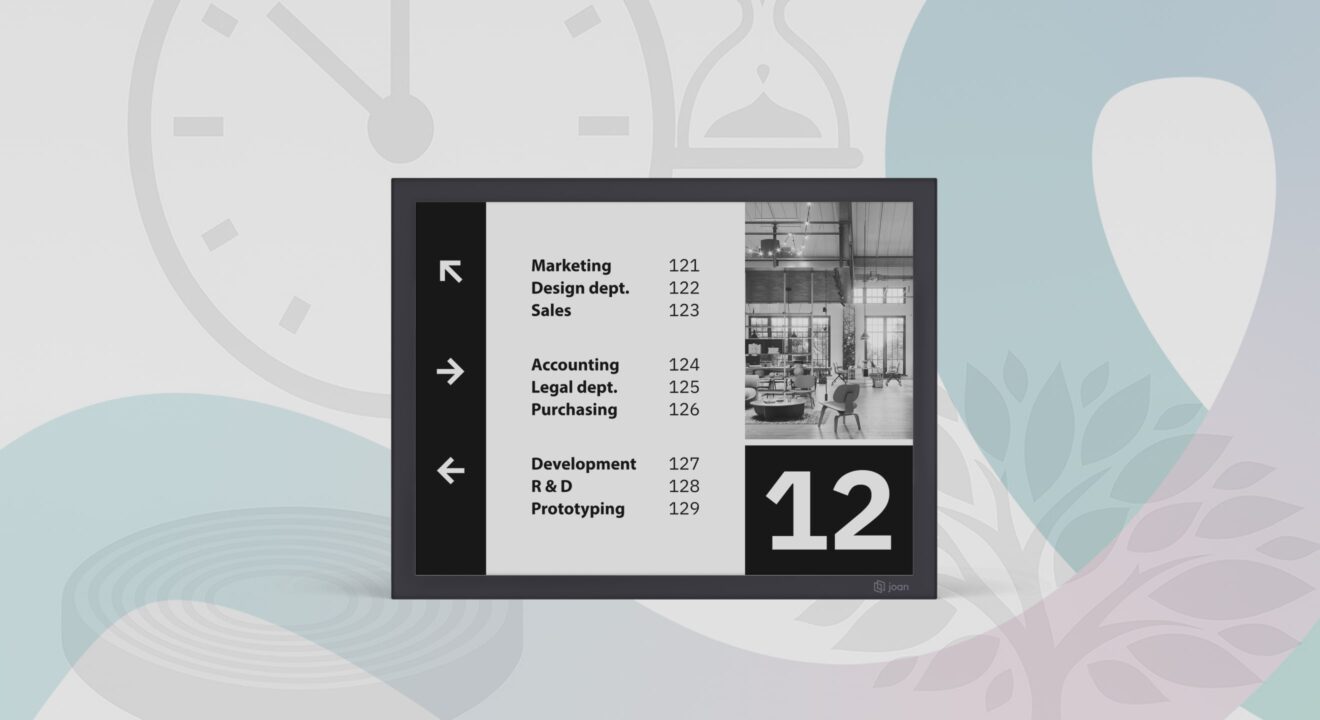

What is the Lifespan of Epaper?
Visionect, 14 Jul 2025
If you’ve ever had a screen burn out or a battery die long before you expected, you’re not alone. Most displays just aren’t made to go the distance, whether it’s a tablet, a phone, or even a digital sign.
E-paper is a refreshing exception. It sips power so slowly that batteries last for years, and the screen itself often outlives the device it’s in.
In this post, we’ll take a closer look at how e-paper stacks up against LCD, OLED, and other display types and answer the main question: What is the lifespan of e-paper?
But first, we need to understand what the factors are that play a key role in Epaper lifespan.

What Affects Epaper Lifespan?
When we talk about epaper lifespan, it’s not just about how long the screen can turn on. A few key factors come into play:
- Physical wear and tear. Think screen burn-in, backlight failure, fading, or general image degradation over time.
- Usage cycles. Some displays are rated for a certain number of hours or refreshes before quality starts to drop.
- Power and heat. Screens that use more energy tend to generate more heat, which can wear down internal components faster.
- Environmental exposure. UV rays, extreme temperatures, and humidity can all take a toll on a display, especially outdoors.
Different types of screens handle these stressors in very different ways, which is where e-paper starts to stand out.
What’s the lifespan of Epaper?
Not all screens are built the same, and their lifespans vary widely depending on the technology and hardware behind them. Some lose brightness over time, others suffer from burn-in, and many draw more power than you’d expect.
However, in order to answer the general question of what’s the lifespan of a display, LCD and e-paper have around the same lifespan of around 3 to 7 years. This depends on factors such as: materials, hardware quality, how long the device is up and running (is online) and the technology used behind it.
However, since e-paper is more sustainable and uses 99% less energy than an LCD, it can be argued that e-paper has a longer lifespan than an LCD.
For example, in a project with Telekom Slovenija for smart shelf labels, our displays have been running since 2014 (that’s +10 years!).

But this is not the same as the lifespan of the device as a whole.
Beyond the screen: E-paper lifespan: device and battery
One of the most overlooked advantages of e-paper is that the screen itself often outlasts everything around it. While traditional displays tend to be the first thing to fail, e-paper displays regularly exceed the lifespan of the battery, the housing, and sometimes even the device’s core electronics.
Discover the battery life of the 13” Place & Play displaysThis kind of durability makes e-paper especially valuable for museum labels, wireless room signs, wayfinding, and remote deployments where maintenance needs to be minimal. We’ve seen e-paper displays still running strong after 7–10 years in the field with no noticeable image degradation and no screen replacements needed. In some applications, the battery gets replaced long before the display shows any sign of wear.
Sustainability: Fewer replacements, less waste
E-paper isn’t just durable — it’s one of the most environmentally friendly display technologies available today. Its energy efficiency and longevity translate into real sustainability benefits:
- Fewer replacements = less electronic waste
With no backlight to burn out and minimal wear over time, e-paper displays stay in use far longer than traditional screens. That means fewer devices end up in landfills.
- No light pollution
Because e-paper reflects ambient light instead of emitting it, it’s easy on the eyes. It doesn’t contribute to nighttime light pollution, making it ideal for museums, galleries, and urban environments.
- Low- or no-battery operation
E-paper can run on extremely low power and is often paired with solar cells or long-life batteries. In some cases, it operates completely battery-free.
- Supports circular economy principles
Longer-lasting hardware and lower energy demands help reduce the environmental footprint of digital signage and smart infrastructure.
- Made with recyclable materials (in some cases)
While recyclability depends on the specific product, many e-paper components can be more easily separated and recycled than those in traditional displays.
From reducing waste to enabling greener tech solutions, e-paper plays a quiet but powerful role in sustainability-driven design.
Real-world use cases of epaper lifespan

E-paper’s durability has been proven in the field through long-term deployments that continue to perform to this day. These e-paper solutions have been successfully implemented across a wide range of industries:
- Airports. E-paper displays run 24/7 in airport signage, providing flight updates and wayfinding without the energy demands or maintenance needs of traditional screens.
- Retail. E-paper shelf labels deployed in stores boast battery lives exceeding five years and are still going strong with no screen replacements.
- Offices and institutions. Wireless room signs and conference displays offer years of reliable use on a single battery, making them ideal for dynamic workspaces and shared environments.
- Museums and galleries. Large-format e-paper displays are used for digital wall labels, exhibit signage, and wayfinding in cultural institutions, delivering high visibility without disrupting the ambiance or requiring continuous power.
These real-world deployments highlight what makes e-paper unique: consistent performance, ultra-low energy consumption, and the kind of longevity that traditional displays simply can’t match.
Choosing a display that lasts: Key takeaways on longevity
E-paper displays offer a unique combination of low power use and long lifespan compared to traditional LCD, OLED, and LED screens. Their design reduces common issues like burn-in and backlight failure, making them well-suited for applications where durability and low maintenance matter.
While every display has its pros and cons, e-paper’s longevity and energy efficiency make it a compelling option for many uses. If you’re exploring display solutions that balance performance with sustainability, e-paper is definitely worth considering.
Have more questions about the longevity of e-paper? Chat with one of our team members today.
GET IN TOUCH TODAYTags

